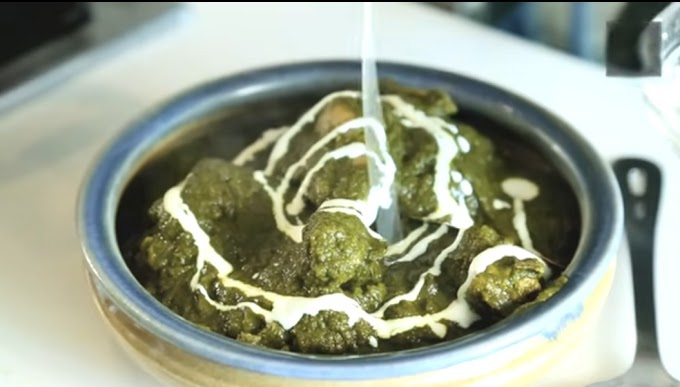Cooking is an Art
Cooking is often seen merely as a necessary task an obligation to sustain ourselves. Yet, to those who truly understand and appreciate it, cooking is far more than just a mundane chore; it is an art form that embodies creativity, passion, and expression. Like painting on a canvas or composing a symphony, cooking allows for endless innovation and personal expression.
The Palette of Flavors
Just as a painter uses a palette of colors to create a masterpiece, a cook uses a variety of flavors to craft a dish. Each ingredient brings its unique taste, aroma, and texture, contributing to the overall harmony of the meal. The way ingredients are combined can result in a simple yet profound experience for the palate.
Consider the use of spices in Indian cuisine. The careful blending of spices like cumin, coriander, turmeric, and cardamom can create a rich tapestry of flavors that is both complex and harmonious. Similarly, the subtle use of herbs in Italian cooking, such as basil, oregano, and rosemary, can elevate a simple dish like pasta into something extraordinary.
The Technique: Mastery Through Practice
In both art and cooking, technique is essential. Mastering the basic skills provides the foundation upon which creativity can flourish. Chefs spend years honing their craft, learning the intricacies of knife skills, the precision of cooking temperatures, and the balance of seasoning. This mastery allows them to experiment and innovate confidently.
Take, for instance, the preparation of a perfect soufflé. It requires precise measurements, exact timing, and a delicate touch. The process of folding egg whites into the batter is akin to an artist's brushstroke—gentle yet purposeful. A slight misstep can lead to a collapsed soufflé, but when done correctly, it rises beautifully, showcasing the chef's skill and artistry.
Presentation: The Visual Appeal
Presentation in cooking is akin to the visual appeal of a painting. The way a dish is plated can enhance the dining experience, much like the way colors and composition affect the viewer's perception of a painting. Attention to detail in presentation can turn a simple meal into a feast for the eyes.
In high-end restaurants, presentation is given as much importance as flavor. Chefs often use contrasting colors, textures, and garnishes to create visually stunning dishes. Edible flowers, microgreens, and artful drizzles of sauce can transform a plate into a piece of edible art.
The Emotional Connection
Art evokes emotions, and so does food. A dish can transport someone back to their childhood, evoke memories of a special occasion, or even provide comfort during tough times. The emotional connection to food is powerful and deeply personal.
Consider the tradition of Thanksgiving in the United States. The aroma of roasting turkey, the taste of homemade stuffing, and the sight of a beautifully set table evoke a sense of warmth, gratitude, and togetherness. These emotions are intertwined with the act of cooking and sharing food, making it a deeply artistic and human experience.
Innovation and Creativity
Like any art form, cooking thrives on innovation and creativity. Chefs constantly push the boundaries, experimenting with new techniques, ingredients, and presentations. The rise of molecular gastronomy, for example, has revolutionized the culinary world by introducing scientific principles into cooking, resulting in unexpected textures and flavors.
Chefs like Ferran Adrià and Heston Blumenthal have become pioneers in this field, creating dishes that challenge traditional notions of food. Spherification, foams, and edible gels are just a few techniques that have emerged, turning the kitchen into a laboratory and the chef into a scientist-artist.
The Cultural Canvas
Food is an integral part of cultural identity, and cooking is a way to preserve and celebrate that heritage. Traditional recipes passed down through generations are like heirlooms, each telling a story of a people, a place, and a time. The art of cooking thus becomes a means of cultural expression and continuity.
Consider the rich culinary traditions of Japan, where the art of sushi making is a revered skill. Each piece of sushi is crafted with precision, reflecting the balance and harmony central to Japanese aesthetics. Similarly, the elaborate feasts of Indian cuisine, with their diverse regional variations, showcase the country's rich cultural tapestry.
The Personal Touch
Every artist has a unique style, and so does every cook. The personal touch that a cook brings to a dish is what makes it special and memorable. This individuality can be seen in the choice of ingredients, the methods of preparation, and the final presentation.
For example, a family recipe for lasagna might include a secret ingredient or a unique layering technique passed down from one generation to the next. This personal touch adds character to the dish, making it more than just food—it becomes a piece of family history and tradition.
The Joy of Sharing
Art is often shared with others, and so is food. The act of cooking for others, whether for family, friends, or even strangers, is a form of generosity and connection. Sharing a meal brings people together, creating bonds and fostering community.
Community feasts, potlucks, and dinner parties are all examples of how cooking transcends the kitchen, becoming a means of social interaction and cultural exchange. The joy of seeing others enjoy the food you've prepared is a reward in itself, much like the satisfaction an artist feels when their work is appreciated.
Conclusion: Embracing the Art of Cooking
Cooking is undoubtedly an art form, one that encompasses creativity, skill, emotion, and cultural significance. It is an expression of individuality and a celebration of community. By embracing the art of cooking, we can transform the mundane act of preparing food into a joyful and fulfilling experience.
The next time you step into the kitchen, think of yourself as an artist. Experiment with flavors, master new techniques, and take pride in your presentation. Most importantly, enjoy the process and the connections it fosters. Cooking is not just about nourishing the body; it is about nourishing the soul, one delicious masterpiece at a time.

















